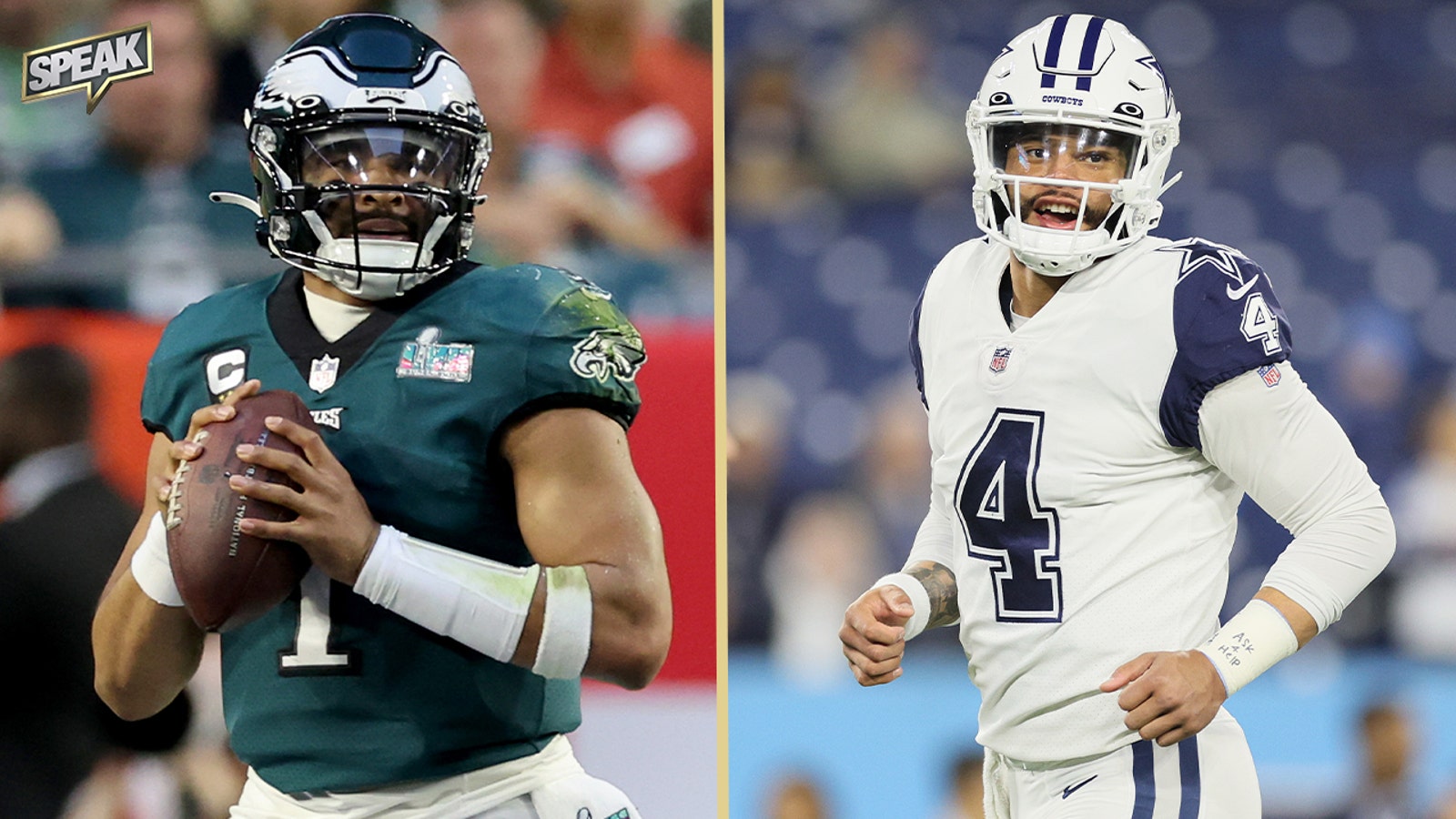
What can Cowboys expect from second-round pick Luke Schoonmaker?
None of this is Luke Schoonmaker's fault.
The Cowboys' newest tight end grinded through five years at Michigan to reach this point. He impressed enough in 43 career games and during a five-month draft cycle to become a top-60 draft pick. From the sounds of it, he's already hard at work making sure he justifies the decision to select him 58th overall in the 2023 NFL Draft.
"No school is a big relief," Schoonmaker joked at the team's rookie minicamp Friday. "Because now I can spend the full day — recovery, watching film, walkthroughs, practice, everything like that. Being in the weight room, too. Just being fully submerged in football is so great."
Schoonmaker has clearly earned the opportunity. It's just a harsh reality of the modern landscape that, through factors beyond his control, he's likely to be the most-scrutinized member of this year's Cowboys draft class.
Why? For starters, it's a question of need. His college teammate and fellow rookie, Mazi Smith, was drafted to address one of the thinnest positions on the roster. The same can be said for third-round pick DeMarvion Overshown. Not the case at tight end, where Schoonmaker will join a pair of young talents in Jake Ferguson and Peyton Hendershot who pleasantly surprised as rookies.
Talk about the pick also highlights just how intense the NFL's draft cycle has become in recent years. The minute he was selected, questions arose about Schoonmaker's "advanced" age of 25, or his modest production in Michigan's incredibly run-heavy offense.
If we can be honest with ourselves, it's also fair to point out that Schoonmaker was not one of the widely discussed names that fans and media were slotting at the top of this deep tight end class. For better or worse, the consensus opinion among outsiders goes a long way toward shaping draft weekend narratives.
Need proof? Consider that the player most likely to be compared to Schoonmaker is the guy taken right after him, Bills guard O'Cyrus Torrence. The Florida product is no more of a proven pro commodity than Schoonmaker, but he was considered a first-round talent by many pundits and he plays a thin position on the Cowboys' roster. Those factors alone made him a popular choice when the Cowboys were making their Friday night decision.
[Dak Prescott may be the NFC's best QB. What does that mean for the Cowboys?]
It's an interesting debate, but not one that will provide a definitive answer in the next two or three years. So rather than try to predict the future, I thought it would be interesting to see what the past can tell us about these sorts of decisions.
Dating back to 2011, there have been 50 tight ends selected in Schoonmaker's draft range — Day 2, during the second and third rounds. The numbers are fairly encouraging for a position that's notoriously hard to learn at the NFL level.
At the bare minimum, 37 of those 50 players managed to finish their rookie contract, or are still with their original team at the time of this writing. That's 74% who are at least useful enough to carve out a role for four years. A big part of that is the versatility of the position. Tight ends typically possess size and athleticism, which obviously makes them useful as blockers and receiver, but that skillset also lends itself to earning plenty of special-teams snaps.
Still, the main thing that makes a tight end worth a top-100 pick is receiving ability, and the returns there aren't bad. Roughly 25% of those players averaged (or are averaging) at least 450 yards per season for the teams that drafted them. Star players like Travis Kelce, Zach Ertz, and Mark Andrews have been found in this neighborhood of the draft board, though they're admittedly a minority.
Schoonmaker only managed 637 yards during his Michigan career, but 66% of that production came last fall. It's a development he thinks he can improve upon in the NFL.
"I'm excited to showcase that. I think it's something I can incorporate and show that I can be used in more of a receiving role," Schoonmaker said.
The bar he needs to clear isn't all that high — not as a rookie, anyway. Across the last decade, Day 2 tight ends have averaged 18 catches for 203 yards while playing roughly 32% of their team's offensive snaps during their rookie seasons. He'll be competing with the likes of Ferguson and Hendershot for playing time, but Dalton Schultz left behind a whopping 817 snaps that need to be replaced.
"Over a 17-game season, all these guys in the tight end room are going to contribute," said Cowboys head coach Mike McCarthy during the draft. "I would definitely view [Schoonmaker] as a starter type as far as his impact. He will clearly play all four positions in the tight end area: on the line, off the ball, lead-back and displaced."
There's an obvious counterpart, which is that guard is not only a thinner position but one that doesn't need to be rotated. Of 47 guards drafted on Day 2 over the last decade, 18 of them (38%) managed to play 80% or more of their team's snaps as rookies. It's a bit easier to find an every-down starter among Day 2 guards, given that it's happened at least once in nine of the past 11 draft classes.
Of course, drafts are about more than one season. Jason Witten contributed just 347 yards to the Cowboys' cause as a rookie. Kelce, another future Pro Football Hall of Famer, played exactly one snap during his rookie season, and it came on special teams. Like every pick in every draft, the story will be written over the course of several years.
There's no tidy conclusion beyond that. It's a lot of effort for a question that can't yet be answered. But in looking back at prior picks, we can at least get a sense of the thought process, as well as what to expect.
David Helman covers the Dallas Cowboys for FOX Sports. He previously spent nine seasons covering the Cowboys for the team’s official website. In 2018, he won a regional Emmy for his role in producing "Dak Prescott: A Family Reunion" about the quarterback’s time at Mississippi State. Follow him on Twitter at @davidhelman_.











